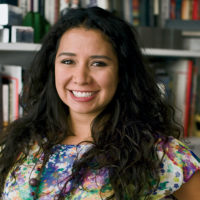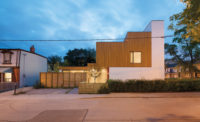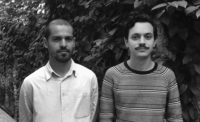Perusing the Oslo-based firm Superunion Architects’ portfolio is a bit like zooming in and out with a telephoto lens: some views reveal the wider picture, while others bring even minute details into focus. Take a 7-foot by 10-foot area rug the architects created patterned with topographic images of Las Vegas, or a 250-acre airport master plan in southeastern Norway. Superunion deftly navigates such leaps in scale.
“The detailing of an interior can inform work at a bigger scale,” says Johanne Borthne, 38, who cofounded Superunion with Vilhlem Christensen, 32, in 2011. “The buildings in a master plan become more than abstract blocks on a field of grass, because you have developed a sense of what it feels like to be in different spaces. These shifts are interesting for us.” Adds Christensen, “Overall, we have the same approach regardless of scale, which is to reach a clear and simple solution to a problem.”
Superunion has swiftly established itself as one of Norway’s most promising emerging architecture firms, receiving Norway’s prestigious Anders Jahr Culture Prize for young architects in 2014 and participating in the Oslo Architecture Triennale this fall. At the moment, they are on the cusp of realizing their first major built work, a market in Oslo and a city square on the opposite coast.
Borthne and Christensen met while completing their M.Arch. degrees at the Oslo School of Architecture and Design. After graduating, the partners moved to Rotterdam to work—Borthne at the firm Powerhouse Company and Christensen at OMA. Two years into their stay, they had the opportunity to work with the firm Futureproof on a commission to develop a strategy for an airport in Rygge, Norway, that incorporated a regional transportation hub and several mixed-use buildings. Though the master plan wasn’t realized, the experience impelled the pair to strike out on their own and return to Oslo. “It was the perfect chance to fulfill a dream and have our own thing,” says Borthne.
After the airport study, the architects entered a wide range of competitions, from a development plan for two cities in southern Norway to an information kiosk that would cover an unsightly ventilation pipe in Oslo. The firm had a breakout moment in 2011 when a proposal for a natural-disaster museum in Turkey—a black rectilinear volume balanced atop a large gold statue of the god Atlas—circulated through architecture blogs. While the entry didn’t win the competition, the model became a part of the Norwegian National Museum’s permanent collection, alongside those by Sverre Fehn and Snøhetta. It also caught the attention of rapper and architecture buff Kanye West, who considered a similar design for an office.
At a larger scale, Superunion has a special interest in the design of public spaces, an asset that is abundant in major Norwegian cities but, in the firm’s view, one that is underdesigned and underutilized. Borthne and Christensen (who also teach at various architecture schools) talk of “repairing” these conditions by introducing more intimately scaled elements such as pavilions, fountains, pedestrian paths, and plantings. “Oslo is trying to find its urbanity by discussing city life, but the recipe seems to be the same,” says Borthne.
“It’s assumed that if you have an open ground floor and squares everywhere, you will have city life, but what kind of space are we actually creating?”
Borthne and Christensen are investigating these spaces in their current work. One project is a market, set to open next spring. The facility, called Vippa, will feature a brewery, food stalls, and an educational kitchen housed within an industrial shed in Fjord City—a rapidly developing zone along Oslo’s waterfront. For the architects, it is important to maintain the area’s raw character, while creating spaces for cultural events.
This June, Superunion won approval to build a public square in Sandnes, Norway, a coastal town of 70,000. The square, a competition-winning design in collaboration with the firm Space Group, will link the city’s old quarter with its new district and connect bus, tram, and train lines. The project’s focal point, a central ellipse, will accommodate activities ranging from ice-skating to film screenings and skateboarding.
At the other end of the spectrum, Superunion is featured in the main exhibit at the Oslo Architecture Triennale, on view through November 27, where the team has displayed free items gathered from finn.no (Norway’s Craigslist)—vases, a TV, a puffy leather sofa, and plenty of IKEA castaways. “In 24 hours, we’ve collected everything you need for a home,” says Christensen. “It’s humorous, in a way. We’re opening up a discussion about what objects mean to people.”










Post a comment to this article
Report Abusive Comment